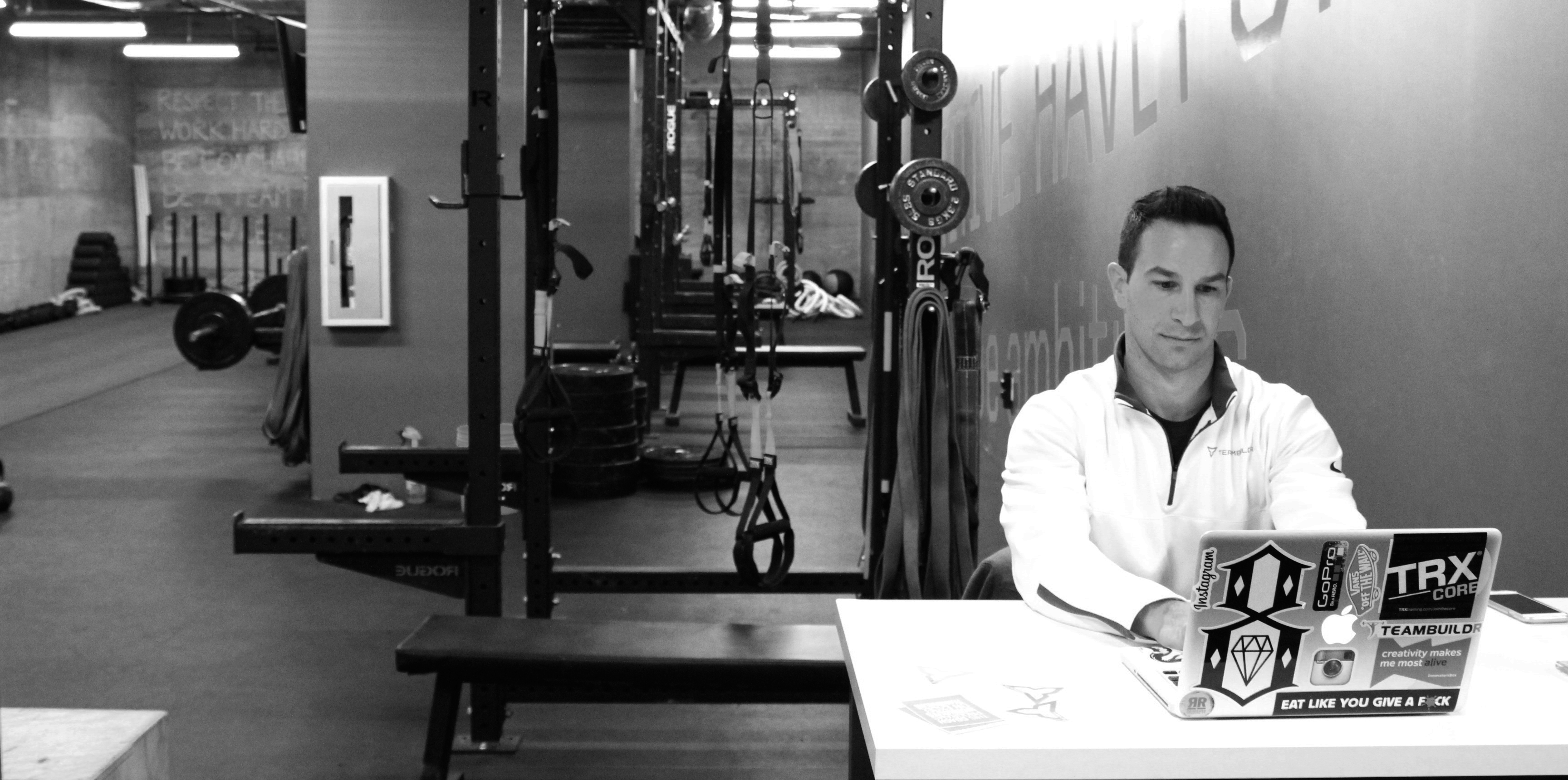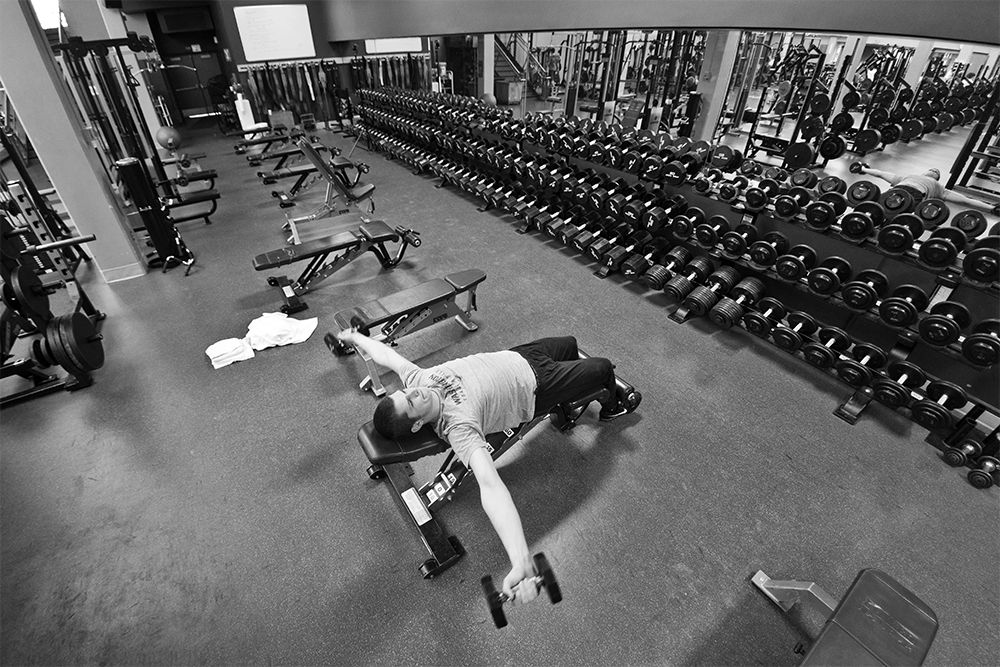10 Things High School Strength Coaches Need to Do Every Day
A successful high school strength and conditioning program is one that meets the most specific needs of the multi-sport athletes and the students in your school.
Yes, I said multi-sport athletes. If you are in a school with a ton of single sport athletes then you have to really work with your sport coaches to encourage multi-sport athletes no matter the size of your school. At the risk of downplaying my job, I think nothing builds better athletes than going out and competing in multiple sports. What you and I do in the weightroom should be what puts a multisport athlete over the top as a competitor and be a tool for a high school athlete. Strength and conditioning shouldn’t be a replacement for another sport. No matter whether our program should meet an overarching need of multi-sport athletes and students in your school, and health and skill related components of physical fitness.
One of my mentors, Randy Wells from Emporia (KS) High School, said to me once at a strength clinic that if you think a certain skill, movement, exercise, or muscle group is important then you need to focus on it every day. I bought wholeheartedly into that statement. I saw the value in that philosophy right away. If you feel like agility is important for your athletes’ performance and students’ health then you probably should be addressing that somehow or some way every day that you are training. My athletes and students saw the benefits immediately when I started focusing on what I felt was important for them as multi-sport athletes and the general wellness of our student population.
Let me run down what I think our athletes and students need and why, then briefly discuss how the best strength coaches address that every day.
Focus #1: Proper and Varied Warm-Up
It is a basic principle of every training program and one that you should not ignore. We utilize walking stretches, PNF stretching, and even games such as tag to vary up the monotony of a warm-up routine. Our warm-up accomplishes the goal of preparing our athletes for exercise and preventing injury.
Ready to give our programming software a shot? Take a 14-day trial, no strings attached >>
Focus #2: Agility
Regardless of the sport, there was most likely be some component of agility involved in that sport. In building a strength and conditioning training program for multi-sport athletes, I fully believe that you have to include some sort of agility component. We might do some sort of pro agility drill or a bank of agility drills utilizing 5 cones on some days and on other days we might just do a quick foot complex which takes less than a minute to complete, but still gives us some agility work that day.
Focus #3: Speed & Explosion
I feel like in every sport you can point to a skill set that requires either speed or explosive capacity. We do alternate with the intensity of the exercises that we do from day to day, but we always have some sort of speed or explosive component. We use a speed ladder or wall drill to teach speed mechanics on one day for example then utilize box jumps or plyometrics to build explosive ability the next day.
Focus #4: Posterior Chain
I feel like focusing the posterior chain especially hamstrings is critical to injury prevention and performance with secondary (high school) level athletes. I think very little attention is paid to strengthening and stabilizing young athletes’ posterior chain in your typical high school strength and conditioning setting. Posterior chain weakness whether it be in turns of strength or mobility can lead to a myriad of issues with athletes making them susceptible to injury. Conversely, a focus on strength and mobility in that posterior chain can produce significant results in power, speed, agility, and explosiveness. We do some sort of posterior chain developer whether it be back extensions, stiff-legged deadlifts, theraball exercises or something similar every single day.
Focus #5: Multi-Joint Ground Based Movement
Many high school strength and conditioning programs focus purely on these multi-joint lifts such as squat, deadlift, power clean, etc. We do the same. We try to make a majority of our multi-joint lifts ground based as to reap the benefits of ground-based movement training. We do still do bench press and other non-ground based movements as well in this focus as I believe there is still a place for those movements in any strength and conditioning program.
Focus #6: Core Strength
Developing core strength (abdominal, obliques, and lower back) has been a key component of almost every strength and conditioning program for the past ten years as research has born out how important core strength is to overall health and performance. We try to do a variety of core strength developers. I am not one to just have our athletes do 100 crunches at the end of session and pretend like we have truly developed core strength. We focus on doing something with our abdominal and obliques on one day and then do lower back developers on the next day. We want to create balance with the anterior, tranverse, lateral, and posterior areas of the “core.”
Focus #7: TRX
We utilize TRX’s for a multitude of reasons. I think they work really well to build core and stabilizer strength. We also use them as support devices to help teach squatting form and build upper body strength by doing TRX Chest Presses when a student is unable to do push-ups. One of the reasons we use TRX’s so much is purely financial. We spent $1000 or more to buy enough TRX’s for our weightroom so I decided that big of investment financially should inherently mean that we should use these devices every day in our weightroom. We try to use the TRX to supplement our core exercises, work on some of the foci already mentioned, or in the place of some of our typical auxiliaries.
Focus #8: Competition
I truly believe that some of your biggest benefits in the weightroom are in “soft skills” such as learning work ethic, determination, discipline, and a competitive nature. Almost every student I work with will at some point be competing in a sport and even if they are not, then learning how to be a competitor is a soft skill that every successful person will need to develop. We try to set up opportunities to compete for our students every day in our weight room. It may be as a part of special competition that we do that do such as tug-a-war or part of the entire workout such at our 60,000 pound challenge where our athletes are trying to reach the 60,000 total poundage mark when they multiple all the reps in a 60 minutes sesson they do by the poundage for each set and add all the totals together.
Focus #9: Mobility & Recovery
I truly believe mobility and recovery are the new frontier of strength and conditioning. If you get a chance, read up on Kelly Sterrett’s Becoming a Supple Leopard or Ready to Run. Those two resources have been key along with some information I gleaned from fellow high school strength and conditioning coaches, including Andrea Hudy at Kansas University, in developing a plan to increase the mobility of our athletes and help them recover faster. We use foam rollers and lacrosse ball for myofascial release and do yoga as part of our workout to address this focus. I also try to touch base with my athletes on their diet, rest, and other specific techniques such as use of compression sleeves to help them recover faster and perform better. At one point in a previous position, we provided our athletes with chocolate milk after every workout to help with the recovery process.
Focus #10: Cooldown
Another basic principle of every training program and one that you should not ignore. We utilize foam rolling, yoga, static stretching, or other cooldown activities to address this focus. Our cooldown accomplishes the goal of properly lowering our athlete’s heart rates and activity rates from an intense exercise session and preventing injury.
So the question then becomes, “What should my foci be in my program?” I think you need to spend sometime conducting a review of your own strength and conditioning philosophy. Does it even fit this model of focusing on key areas like I mentioned every day? If so, then you need to evaluate what your athletes or students’ needs are and what you have the equipment, space, and time to accomplish. Medicine ball activities have alway been a part of my foci in several previous schools that I worked in, but at Wamego High School, we only have 4 medicine balls so I had to make some adjustments. In my own program, I am currently evaluating making shoulder girdle development one of our foci as we have had multiple shoulder related injuries during our past two seasons (I think we should have bought some stock in Sully braces.) Perhaps you work with all female athletes, and prevention of ACL injuries is a focus that you could incorporate every day. I think it is important to be mindful of the principles of progression, specificity, overload, and recovery when developing your program. I love the benefits of power cleans and triple extension movements, but I can’t have our kids go maximum effort power cleans every day. We may go maximum effort on two days and then use supplements like kettlebell swings or weighted box jumps to develop triple extensions on another day and merely practice our form another day in this model.
In terms of using TeamBuildr to help you accomplish zeroing in on certain foci, I found their tools to be extremely valuable. I went through and entered all the lifts, complexes and exercises that I use and categorized each one. Now, all I have to do each day is filter my lifts or complexes by each of my foci’s category and add one or more of those to my lift on my students/athletes’ workout each day. I even had TeamBuildr load their bank of exercises into my bank so that I had all of the great video demonstrations they have available and categorized those lifts/complexes in my account to allow me to streamline my workout building. TeamBuildr has saved me countless hours organizing my workout plans.
Conclusion
I’ll leave you with this advice: Investigate what your athletes/students need and address that need in some manner every time you see your athletes/students. Also, coach what you know in terms of movements, exercises, and skills. Don’t just try new things to try them. I view strength and conditioning as a prescription type model. There needs to be specific reasons why you do certain movements, exercises, and skills in your weight room and you need to be very good at teaching/coaching them. Don’t just incorporate lifts because they look cool. Have your athletes/students do things for a prescribed and specific reason and cut out the fluff. That is what having these foci helped me be the most effective at.
Subscribe to our blog
Subscribe to receive the latest blog posts to your inbox every week.
Related posts

A Strength Coach's Lie: Tracking Yourself to Death

3 Steps to Advancing Your Career as a Strength Coach
